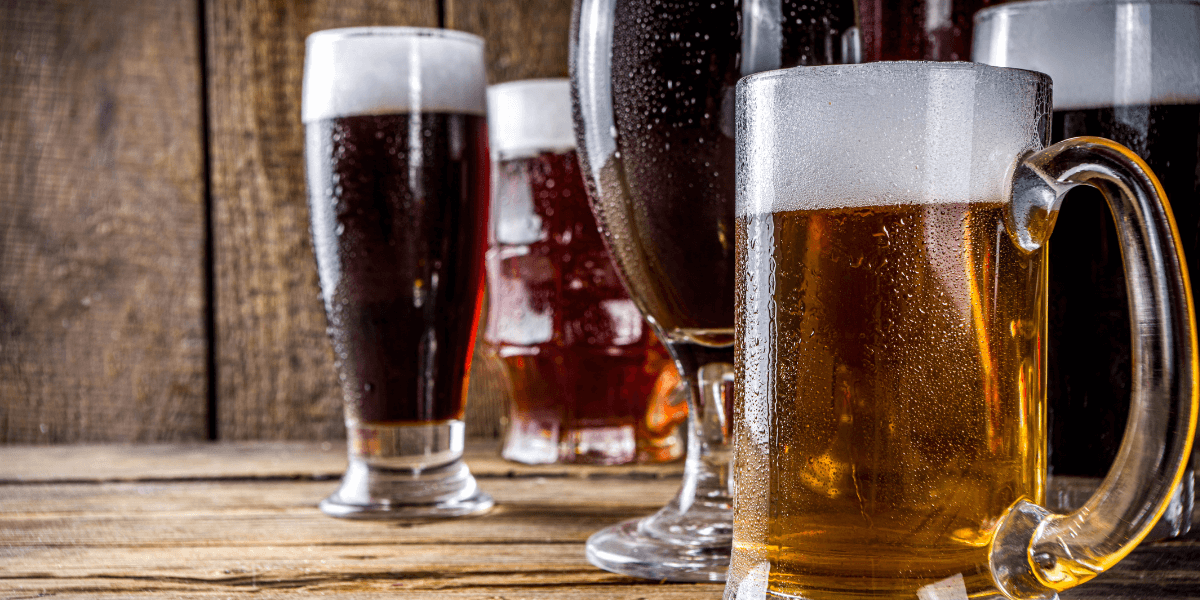
As an avid homebrewer, one of the things I enjoy most is brewing New England IPAs (NEIPAs). These beers are known for their juicy, hazy appearance and aromatic hop profiles. They offer a vibrant, fruity character that’s unlike most other beer styles. However, one problem I frequently encountered early in my brewing journey was oxidation. It’s a challenge for all beer styles, but New England IPAs and oxidation can be a particularly troublesome combination. Oxidation can quickly strip the beer of its freshness, resulting in stale flavors that destroy the intended experience. That’s why it’s crucial to understand how oxidation affects New England IPAs and how to mitigate it during brewing.
In this article, I’ll dive into the effects of oxidation on New England IPAs and provide tips on how to minimize the risks, ensuring your beers stay fresh and flavorful.
What is Oxidation, and How Does It Affect New England IPAs?
To truly grasp the impact of oxidation, it’s important to first understand what it is and how it occurs. Oxidation is a chemical reaction that happens when oxygen interacts with various compounds in the beer, most notably the hops and other volatile compounds. While oxygen is essential in small amounts during fermentation to help yeast thrive, excessive oxygen exposure later in the brewing process can lead to off-flavors, diminished aromas, and even changes in color.
New England IPAs are especially susceptible to oxidation because they rely heavily on hops for their defining flavors and aromas. These beers typically contain large amounts of hops, which contribute to their tropical fruit, citrus, and piney notes. When exposed to oxygen, these hop oils can break down and lose their aromatic properties. The result is a beer that tastes flat, stale, and overly bitter. Furthermore, oxidation can lead to the presence of unpleasant off-flavors, like wet cardboard or paper, which can overwhelm the once-bright taste of the beer.
The Effects of Oxidation on New England IPAs
After brewing several batches of New England IPAs, I learned firsthand how oxidation can ruin the delicate flavors of these beers. Here are some key signs of oxidation in NEIPAs:
1. Diminished Hop Aroma and Flavor
One of the standout features of New England IPAs is their bold hop aroma. The bright citrus, tropical fruit, and piney notes are meant to be explosive, creating an inviting beer that smells and tastes fresh. However, oxidation causes the hop character to fade, making the beer taste less aromatic and more subdued. It’s a shame when you’ve invested time and energy into selecting the perfect hops only to have oxidation rob the beer of its vibrancy.
2. Off-Flavors like Paper or Cardboard
Oxidation is infamous for producing off-flavors that are often described as “wet cardboard” or “papery.” These flavors are a clear indication that the beer has been exposed to excessive oxygen. Unfortunately, once oxidation sets in, these off-flavors can take over, overshadowing the other aspects of the beer and rendering it unpleasant to drink.
3. Color Changes
New England IPAs are known for their hazy, golden-to-orange appearance. However, oxidation can cause the color of the beer to darken, turning it a dull brownish hue. This is another sign that oxidation has taken place and that the beer has passed its prime.
4. Loss of Freshness
The key to a great New England IPA is its freshness. NEIPAs are best enjoyed shortly after they’re brewed, while their hop character is at its peak. Oxidation accelerates the aging process, robbing the beer of its lively, juicy flavors. Once oxidation takes hold, the beer becomes stale, and the once-bold flavors become muted.
How to Prevent Oxidation in New England IPAs
After battling oxidation in my own batches of New England IPAs, I developed several strategies to minimize the risk and keep my beers fresh. Here are some of the best practices I follow to prevent oxidation:
1. Minimize Oxygen Exposure During Brewing
The best way to avoid oxidation is to limit oxygen exposure at every stage of the brewing process. I pay close attention to the following stages:
Wort Transfer
When transferring wort from the kettle to the fermenter, I make sure to avoid splashing, as this introduces oxygen into the beer. Using a siphon or a pump to transfer the wort gently is key to minimizing oxygen contact.
Fermentation
Once the wort is in the fermenter, I ensure that the lid is sealed tightly, and I make sure the airlock is functioning properly. This helps create an airtight environment for fermentation, reducing the chances of oxygen entering and causing oxidation. Additionally, fermenting in a temperature-controlled environment ensures that the yeast stays active, reducing the risk of introducing oxygen during fermentation.
2. Use Proper Packaging Techniques
When it’s time to package the beer, I take every precaution to reduce oxidation. Packaging is one of the most critical steps where oxygen can be introduced into the beer. Here are some of the methods I use to protect my beer during packaging:
Kegging
If I’m kegging the beer, I always purge the keg with CO2 before filling it. This eliminates any oxygen in the keg that could lead to oxidation. I also use CO2 to push the beer into the keg, minimizing the risk of oxidation during the transfer.
Bottling and Canning
When bottling or canning, I make sure to use an oxygen scavenger cap or a CO2 purging system to remove oxygen from the bottles before sealing them. This is especially important when bottling large quantities of beer, as exposure to oxygen during this step can quickly degrade the quality of the beer.
3. Store the Beer Properly
Once my New England IPA is packaged, I make sure to store it in the right conditions. I keep it in a cool, dark place to prevent exposure to heat and light, both of which can accelerate oxidation. The colder the storage temperature, the slower the oxidation process will occur, preserving the beer’s freshness for a longer period.
4. Drink the Beer Fresh
One of the easiest ways to avoid the effects of oxidation is to drink the beer fresh. New England IPAs are meant to be consumed within a few weeks of brewing to enjoy the full hop character. While some beers can age well over time, NEIPAs are best enjoyed while they’re still fresh to get the full impact of the hops.
5. Use Antioxidants
Some brewers add antioxidants, such as ascorbic acid, to their beers to help prevent oxidation. While I’ve not used this method myself, it can be effective in reducing the chances of oxidation affecting your beer, especially during storage.
Conclusion
Oxidation is a significant issue for any brewer, especially when making hop-forward beers like New England IPAs. These beers rely on fresh, vibrant hops to deliver their signature flavors and aromas. Unfortunately, once oxidation takes hold, it can drastically reduce the quality of the beer. By minimizing oxygen exposure during the brewing process, using proper packaging techniques, and storing your beer correctly, you can preserve the freshness of your New England IPAs and enjoy them at their best. Following these strategies will help you brew better, fresher beers that showcase the hop character New England IPAs are known for.




